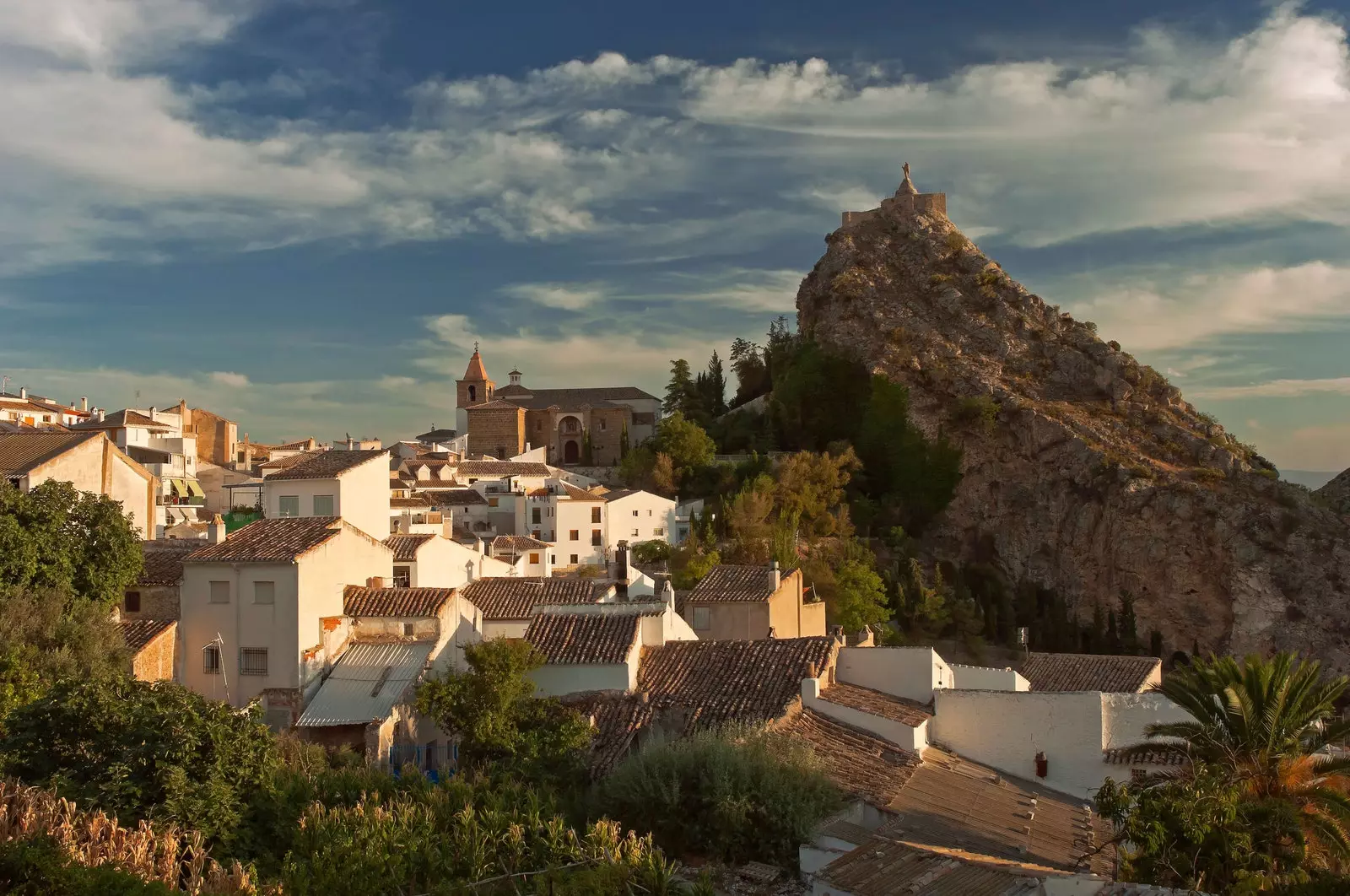
Castril, nature, history and literature in the north of Granada
In the north of the province of Grenade , the white houses of Castril they group together seeking the protection of a rocky crag that has been the protagonist of history. Around them, nature has forged a magical landscape that inspired even the very Joseph Saramago.
Today, the steep and intricate streets of Castril are presented fresh, colourful, clean and calm . With a population of just two thousand inhabitants , market days, weekends and vacation periods seem to be the only times when life runs strong again through the twisted arteries of the town.
However, this was not always the case, since the land of this Granada municipality has witnessed battles and the passage of great empires , in addition to having welcomed skillful and imaginative artisans who ensured that Mother Nature was not the only one to conceive beautiful works in Castril.
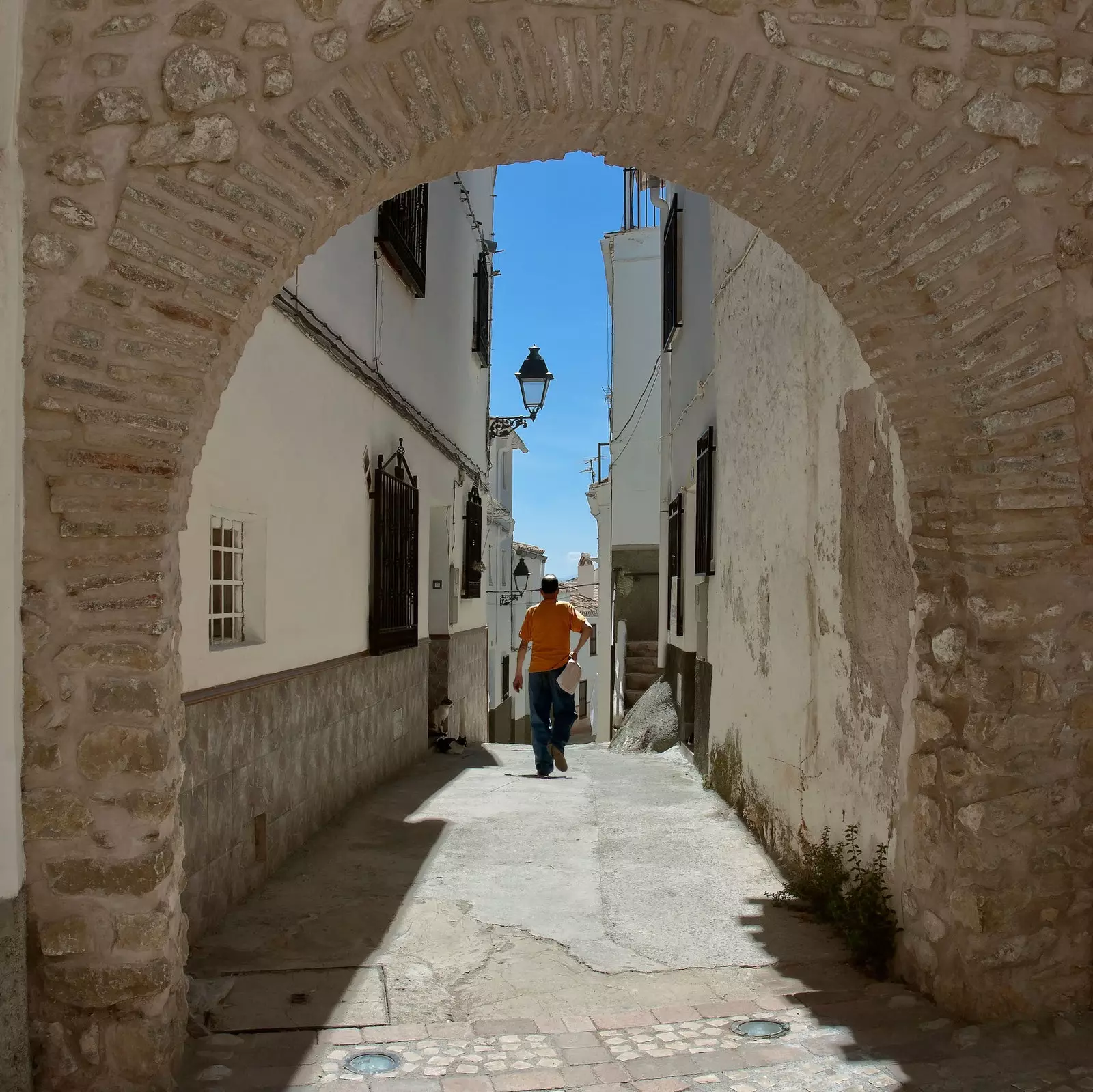
Castril, history and literature in Granada
CASTRIL, STRATEGIC MILITARY PLACE
The Roman historian tells Titus Livy , that the blood of the Carthaginian general Hamilcar Barca – father of one of the best strategists of all time, the great Aníbal Barca – bathed the fields surrounding the town of Castril.
Whether this is true or not (there are different theories about where the battle of Helike took place, in which the Carthaginian perished), it does seem to be proven that the Romans , successors of the Carthaginians in the dominion of the Iberian Peninsula, they built an important military camp here . In fact, it is believed that the name of the town may derive from the Latin word for this type of settlement: castrum.
And it is that the location of Castril, from a strategic point of view, it is unbeatable.
It is easy to realize this when ascending the ramps and stairs that lead to the remains of the Arab fortress that crowns the Rock of the Sacred Heart . those stones of the ancient arab Qastalla , withstood the Christian assaults for more than a century, only to fall definitively into the hands of the troops of the Catholic Monarchs in 1489.
The best way to discover the history and secrets of the castle is by reserving a guided tour at the Tourist Office , located at the beginning of the ascent to the rock, in front of the village church.
When looking at El Canton viewpoint - located on the same rock - the views are splendid. At the foot of the rock, the formless group formed by the beautiful low houses of Castril . Around them, there are fields full of olive trees, among which are some vegetable crops, vegetables, almond trees, cereals and vines. And all this delimited by the winding silhouettes of the Sierra de Castril mountains.
A PLACE WHERE NATURE IS THE PROTAGONIST
If the day is calm, from the top of the rock you can hear the murmur of the waters of the river Castril , engine of life in this area since time immemorial.
The flow of the Castril runs from north to south through these lands, between mountains, canyons, chasms and waterfalls , drilling suggestive and mysterious caves in the limestone rock walls.
Some of the most beautiful caves are the Cave of the Dead – in the Sierra Seca - , in which strange formations of stalactites and stalagmites have been formed, and the Cave of Don Fernando , which has the honor of being the deepest in the province of Granada.
Admiring part of the beauty of the Castril river route is easy, since from the very center of the town there is a path that descends towards the Closed of the Castril River.
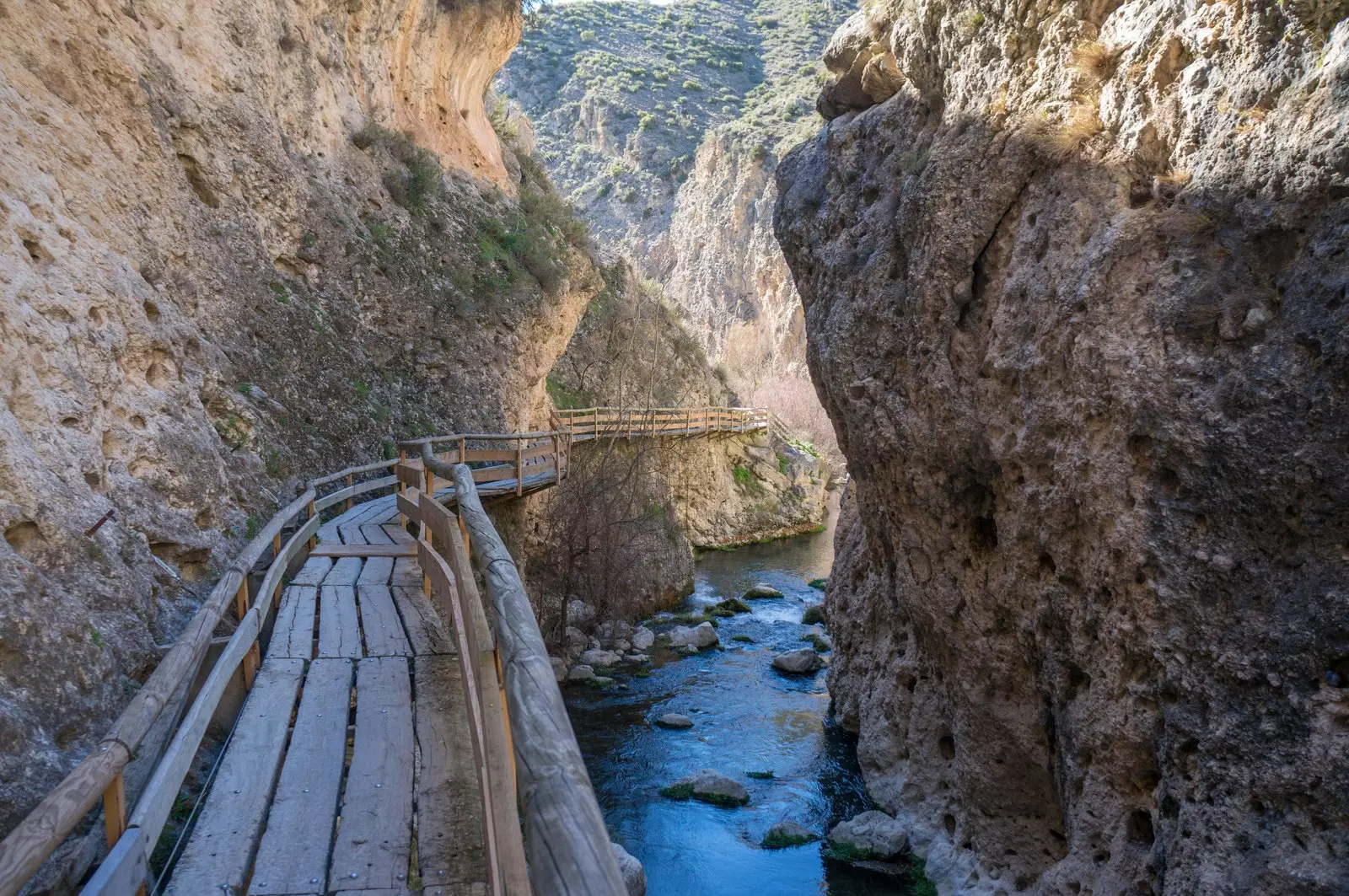
Closed of the Castril River
The walk through the closed is short, very scenic and suitable for all audiences. The first part runs along a wooden walkway that goes into a narrow stone gorge. To the right of the footbridge, the waters of the Castril jump, happy and mischievous, over rocks and among dense vegetation..
Shortly after, you cross to the other side of the canyon via a suspension bridge. On the other shore wait a tunnel, about 70 meters long , through which you can access a beautiful natural balcony from which you can admire a small waterfall.
Upon exiting the tunnel, there will only be a few meters left to reach an old mill – which still retains its machinery – converted into a restaurant.
Although this nature walk is the most popular among travelers who visit Castril, there are others that are very worthwhile, such as the Closed of the Magdalena – which goes into a ravine with walls about 150 meters high –, longer and more demanding hiking routes through the Sierra de Castril, and the path that runs through the Outline of the Portillo Reservoir.
The turquoise waters of Portillo Reservoir They contrast perfectly with the green of the vegetation and the ocher and reddish tones of the mountain walls. To enjoy this beautiful landscape in a different way, you can rent kayaks with which to explore the Portillo crossing its waters.
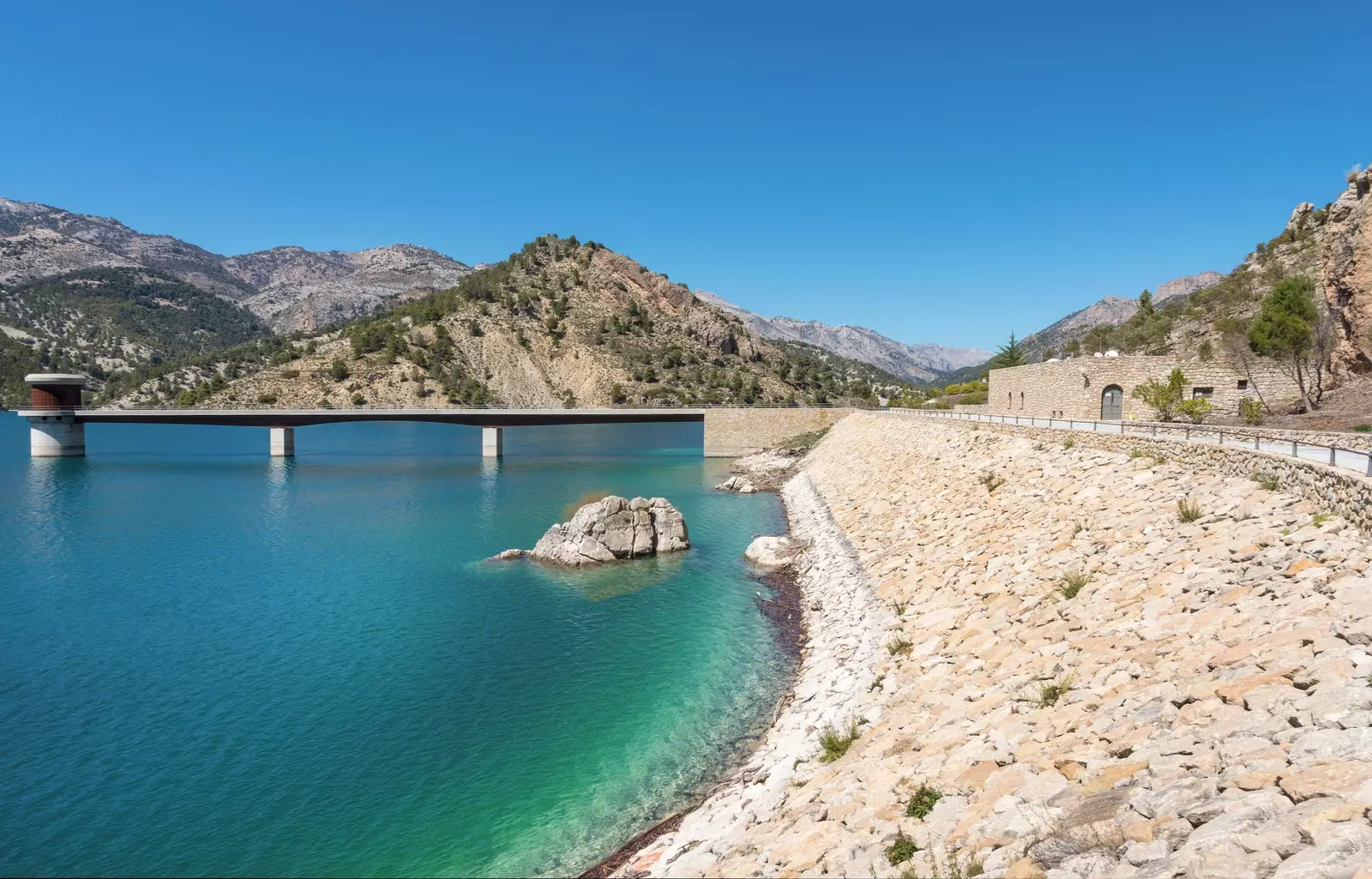
Portillo Reservoir
CASTRIL, LAND OF ARTISANS
The Castril River not only caused nature to spread an elegant and striking dress around the town, but also It served as a motor for different handicraft industries.
The waters of the river moved the wheels of the flour mills, but they also created, in Castril, ladles and wooden spoons, espadrilles, copper boilers, Arab tiles and ceramic covering material, and, above all, glass.
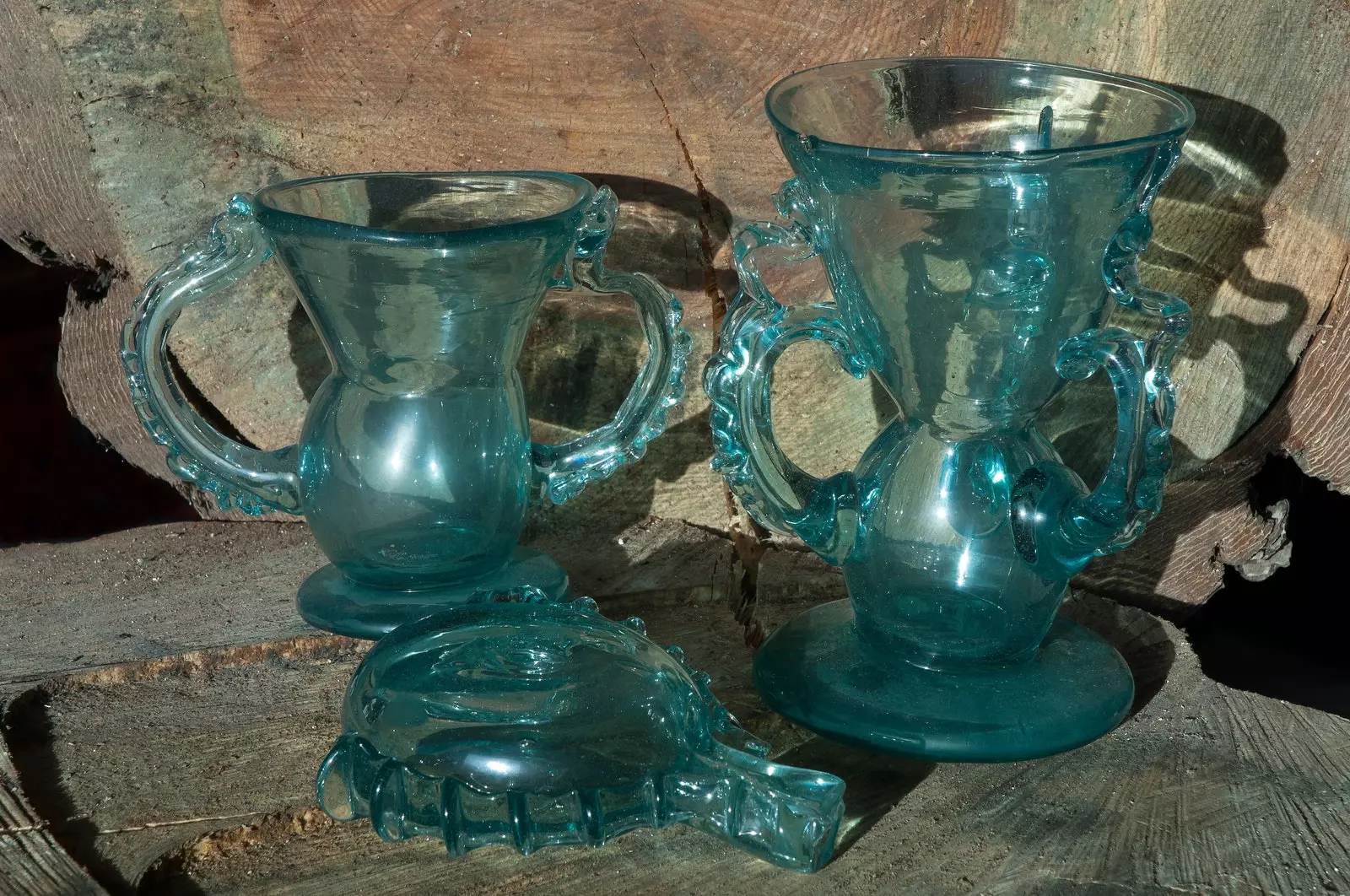
Glass, of important historical production in Castril
Castril was, between the 16th and 19th centuries, the main focus of stained glass activity in southern Spain . Currently, spectacular colored glass can be admired in the streets of the town, forming a team with the hundreds of flowers that brighten the whitewashed facades of the houses.
To enjoy a more complete and professional sample of these centennial glasses from Castril, you should visit the Archaeological and Ethnological Museum of Granada or other European museums, such as the Victoria & Albert, in London.
CASTRIL AND JOSE SARAMAGO
Few of the inhabitants of tranquil Castril could imagine that one day they would witness the wedding of a Nobel Prize winner in the village . But it was.
In 2007 there was the intimate, civil wedding of the Nobel Prize for Literature, the Portuguese José Saramago, and Pilar del Río , a journalist born in Castril. Saramago came to be named the town's adoptive son and he enjoyed long walks there that inspired him in his writings and in which, in his own words, "I was looking for the childhood I lost."
The Portuguese came to collaborate on the book Castril. visions of a landscape (2006, Antonio Teruel Mallorquín), writing some texts on it.
THE FLAVOR OF CASTRIL
The historical, natural, artisan and literary population of Castril also presents gastronomic attractions.
Being in a natural park, game meat is part of many of Castril's gastronomic proposals. Thus, the noodles with partridge or hare, buns with rabbit or various stews made with the tasty trout from the river Castril.
The migas with remojón or the Castril maimones – a delicious, and consistent, unique stew in the area -, they also accompany great meats and renowned sausages.
One of the best places in Castril to try these viands is the Hostal y Restaurante La Fuente.
Gastronomy, nature, history... All this adds up, but the true treasure of Castril is the people who make the traveler feel at home. A home you'll regret not discovering sooner.
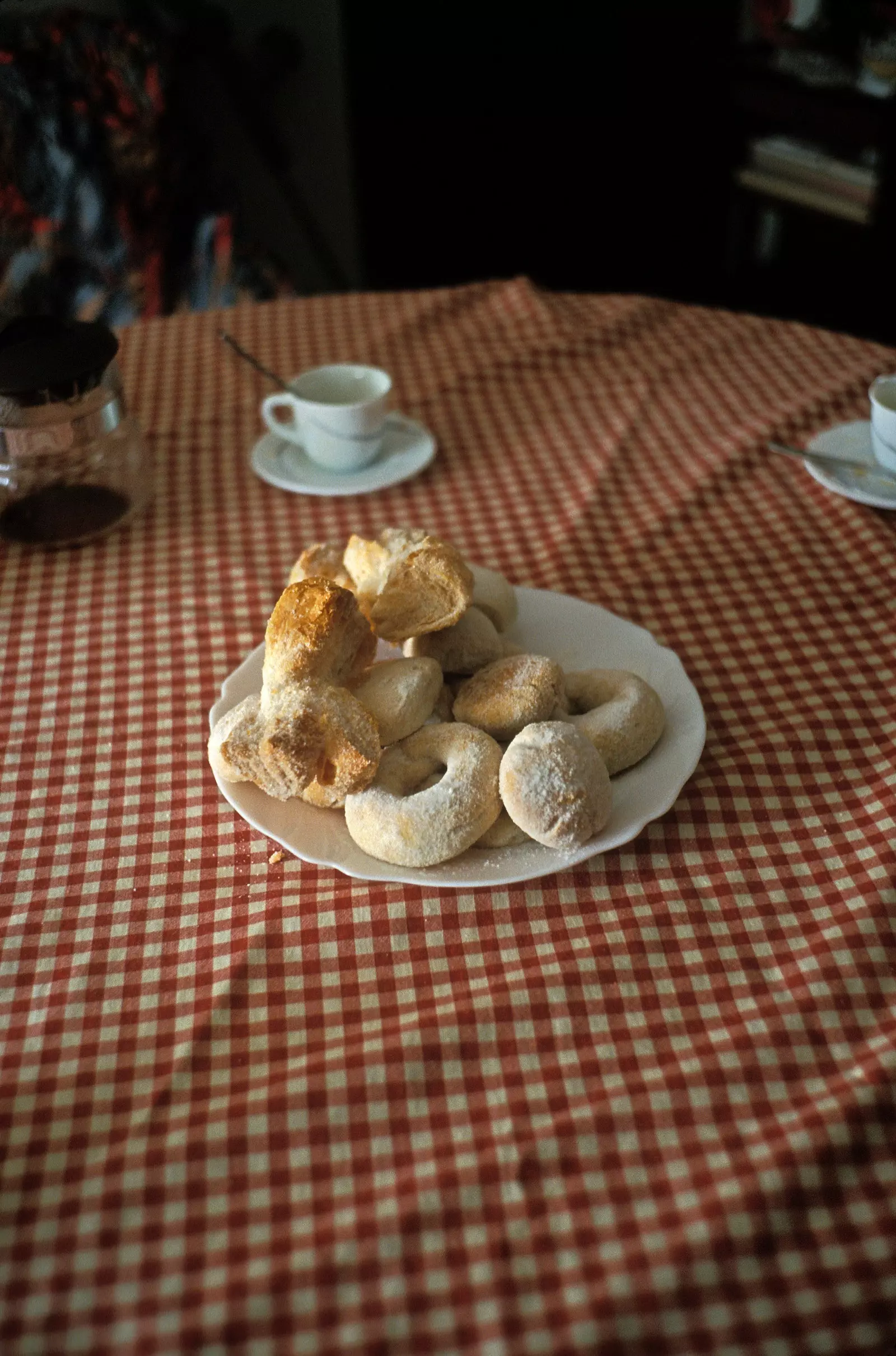
Coffee and pastries in Castril
